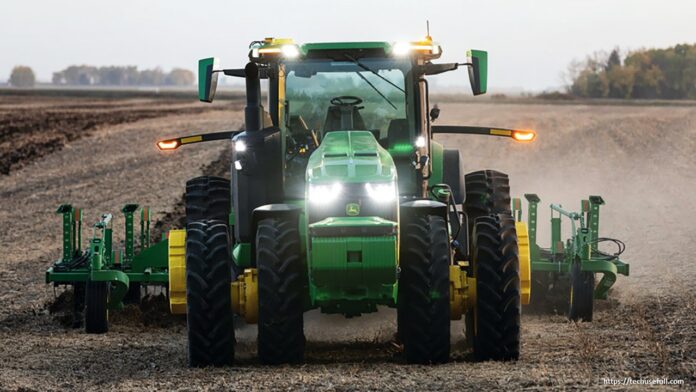The John Deere Corporation is one of the world’s largest manufacturers of farm equipment. From tractors to steel plows, the company has built a legacy that many farmers can rely on.
Business model
John Deere is a leader in agricultural technology. The company’s strategy has expanded into a wide variety of markets. As a manufacturer, the company has a unique commitment to farmers around the world. It is committed to providing customers with the latest, most advanced data-enabled equipment solutions.
Deere’s mission is to become the world’s most trusted brand. By investing in its core businesses and diversifying its offerings, the company is well-positioned to stay ahead of its competitors.
One way the company is doing this is by developing an ecosystem of smart products. A smart product is a product that makes use of data and other resources to improve efficiency and provide additional services to a customer.
There are four main components to the John Deere ecosystem. These are the equipment, the software, the services, and the weather data systems. Each component of the ecosystem offers a valuable service for farmers. Using the right data can help a farmer make the best decision in their crop production.
Tractors
John Deere tractor models are available for a wide variety of uses. For example, you can find tractors that are perfect for small farms, landscaping, and even working livestock. You can also choose from tractors that can be used for snow removal and hauling.
These tractors are designed for agricultural production and are made in the United States. They come in a range of horsepower, from 310 to 360.
Aside from being manufactured in the United States, Deere tractors are also sourced from over 40 countries in Asia. In the early 2000s, John Deere introduced modern technology and new engines. Today, tractors are available with a range of features, from a hydrostatic-2 range transmission to open station cabs.
The John Deere Model “G” is one of the most successful tractors that the company has ever produced. It was produced from 1937 to 1953. This model was equipped with a six-speed transmission and Roll-o-Matic.
Another model, the John Deere Model “B,” was released in June 1934. This was the first two-cylinder model that the company made. With its shorter frame, it was better suited to small farms.
Steel plows
The invention of the John Deere steel plow was a great leap forward in agricultural innovation. It helped farmers in the Great Plains till their land quicker and more efficiently.
The plow was designed for use in the sticky soil of the prairie. Until the invention of the plow, farmers had to rely on wood and cast iron plows, which were not as effective.
The plow also helped farmers manage their weeds. Cultivating the land meant killing the weeds and allowing the plants to receive more sunlight.
In the mid-1800s, farmers in the midwestern United States faced a weeding problem. They used a plow to break up the soil and turn it, so the plants could get more sunlight.
In 1837, the blacksmith John Deere invented the first commercially successful steel plow. He had the idea after he saw a broken steel saw blade.
After developing the plow, John Deere founded the Deere & Company in Moline, Illinois. This company would become one of the largest agricultural companies in the country.
Family history
The family history of John Deere is unclear, but he came from a small community in Rutland County, Vermont. His father, William Rinold Deere, was a professional merchant tailor. He married Sarah Yates, and they had three children.
In 1808, Deere’s father left for England, and John Deere never saw him again. But, in the 1800s, he became an innovator and a pioneer in the plow manufacturing industry. By the time of his death, he had become the country’s leading implement maker.
As an adult, John Deere moved his family to Illinois. His family was involved in the plow business. They were recruited by farmers who purchased plows, and the company made several varieties of equipment.
John Deere’s company grew when the area settlements spread, and farmlands expanded. In addition to plows, Deere manufactured wagons, planters, and cultivators.
During his lifetime, John Deere served as the second mayor of Moline, Illinois. While serving, he improved the city’s infrastructure.
He also was an active member of the Whig party. However, he did not run for a second term in office due to dysentery.


